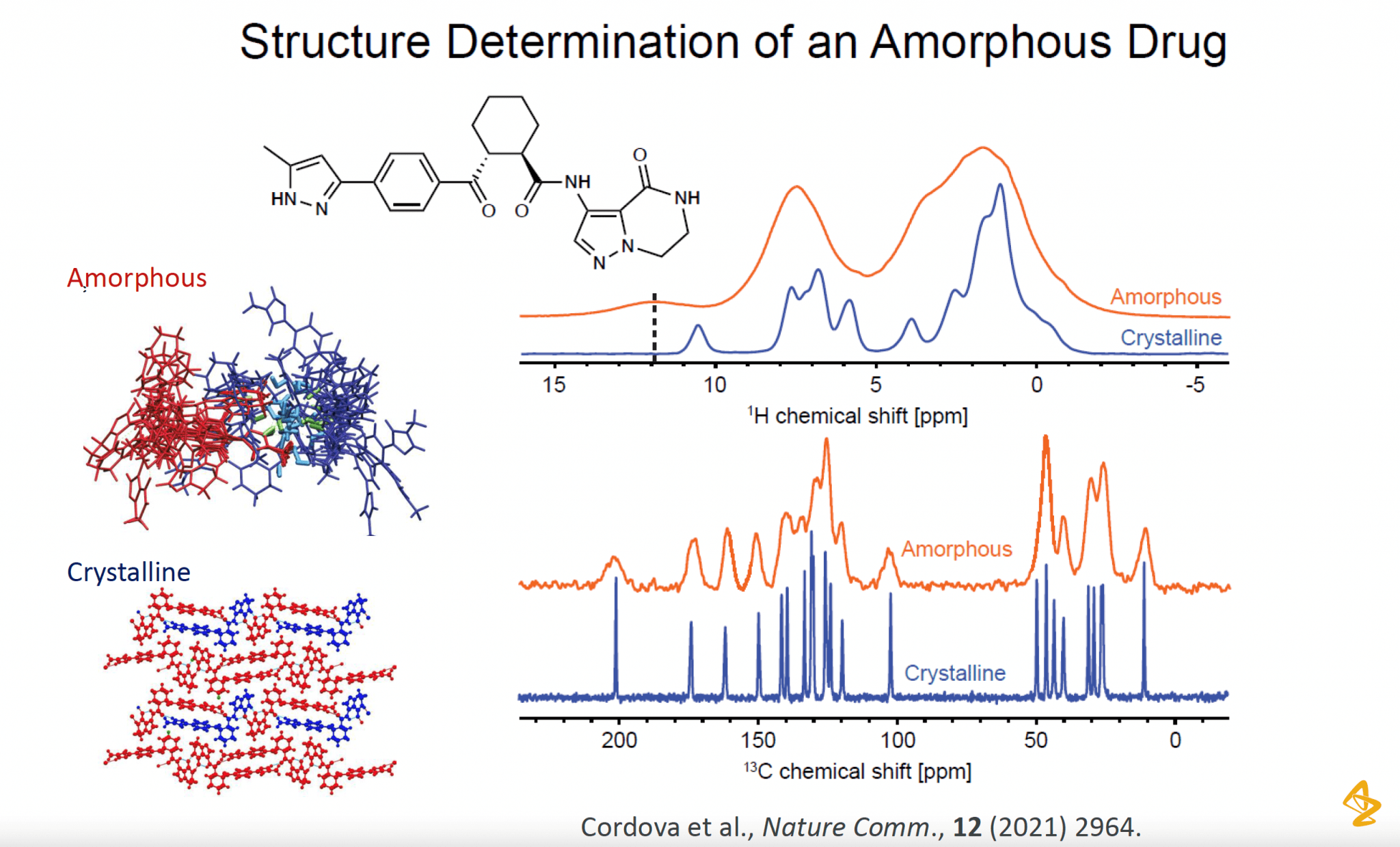Industry case: Breakthrough high sensitivity NMR technique available through SciLifeLab/AstraZeneca collab
As a result of a long-term collaboration between the SciLifeLab Swedish NMR (Nuclear magnetic resonance) centre and AstraZeneca, advanced Dynamic Nuclear Polarization (DNP) NMR is available for both academia and industry. This cutting-edge instrument, which is much faster than previous versions, can analyze samples in minutes rather than days, months or even years, and is vital for drug development.
12 years ago, two scientific papers, one published in JACS and the other one in Nature, described a new technique based on Nuclear Magnetic Resonance spectroscopy (NMR). The new technique was called Dynamic Nuclear Polarization (DNP) and had the potential to become much faster than normal NMR, since it could deliver results at a much higher sensitivity, using a signal that is up to several hundred times stronger than conventional NMR.
Through a cost sharing collaboration, AstraZeneca and SciLifeLab now possess and share a DNP-NMR instrument, enabling AstraZeneca, but also other companies and academia, access to this cutting-edge technology for the first time in Scandinavia.
“This is a big investment, from both parties and this fruitful collaboration between AstraZeneca and SciLifeLab now makes this technique available to Swedish researchers”, says Göran Karlsson, Director of Swedish NMR center (GU).
What is DNP-NMR used for?
When developing new drugs, it is extremely important to produce the optimal crystal structure or solid form of the active drug, since this determines how fast the active component dissolves. One need to be able to control the form of the molecule for effective and safe late phase trials. An unstable structure might make the drug work in the wrong way, become less effective or interact too fast/too slow.
Most active substances possess polymorphism, which means they can form many types of different crystal structures. It is vital that you select a stable variant with known properties that will not change during manufacturing, storage or once inside the body. Here the DNP-NMR method is superior to all other techniques in solving different structures from powders, i.e. without access to large single crystals.

“DNP-NMR analysis is non-destructive, which means that you can keep the cells alive and use them for further analysis”, explains Staffan Schantz, Principal Scientist at AstraZeneca
“Inside-cell, label-free NMR” is also being developed in this collaboration. Here DNP-NMR is used to trace and quantify substances (down to pico-mole levels), inside living cells in a non-invasive fashion. Techniques like Mass spectroscopy or Fluorescent Labeling, can also be used, but affects the cells by either destroying them or affecting the drug properties through the labeling process. DNP-NMR works just like a Magnetic Resonance Imaging (MRI) scan and leaves the cells unaffected.
“With DNP-NMR and computational methods including AI we can now solve the structures at the atomic level for organic molecules in any physical form, which is an amazing help in choosing the right structure from the start of development for clinical trials”, says Staffan Schantz, Principal Scientist at AstraZeneca
The future
As a part of the EU research infrastructure consortium Horizon 2020 project, PANACEA, The Swedish NMR centre in Gothenburg will soon be receiving an upgrade, capable of studying fluorine-19 atoms, commonly used in pharmaceuticals, but not feasible with current DNP technology. It will be the first probe of its kind worldwide and a welcomed addition for drug companies like AstraZeneca.
Read the Swedish article on AstraZeneca’s webpage here.
Want to know more?
Contact:

SciLifeLab
Göran Karlsson
Director of Swedish NMR center (GU) / platform director of the SciLifeLab Integrated Structural Biology platform
goran.karlsson@nmr.gu.se

AstraZeneca
Staffan Schantz
Principal scientist AstraZeneca
Staffan.Schantz@astrazeneca.com
Related publications
Surface NMR
Spectroscopy: Clear signals from surfaces
Robert G. Griffin, Nature, 2010 Nov 18;468(7322):381-2.
Surface enhanced NMR spectroscopy by dynamic nuclear polarization
A. Lesage et.al, J Am Chem Soc, 2010 Nov 10;132(44):15459-61
Current use examples
Structure determination of an amorphous drug through large-scale NMR predictions
M. Cordova et.al, NATURE COMMUNICATIONS, 20 May 2021
In-Cell Quantification of Drugs by Magic-Angle Spinning Dynamic Nuclear Polarization NMR
A. Bertarello, et.al, JACS, J. Am. Chem. Soc. 2022, 144, 6734−6741





